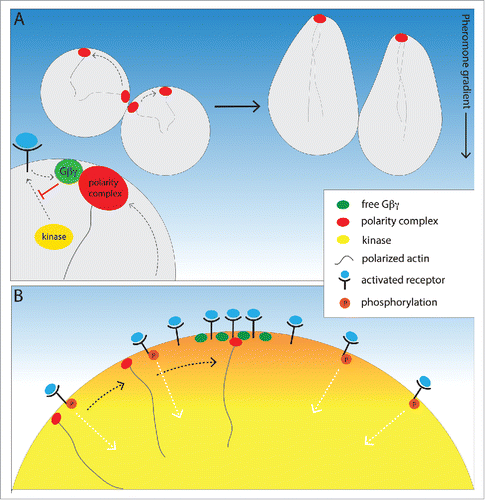Figures & data
Figure 1. A unified model of yeast gradient sensing. (A) Gβγ constraint of polarity complex wandering. Actin-dependent vesicle docking drives random movement of the Bem1-Cdc24-Cdc42 polarity complex along the PM, but movement of the complex is biased up the pheromone gradient by its interaction with Gβγ. Activated receptor catalyzes the release of Gβγ, which inhibits receptor phosphorylation through its interaction with the receptor kinase, and thereby differentially protects both receptor and G protein from internalization at the incipient mating projection site. (B) Gradient-induced positioning of the chemotropic site. Gβγ inhibition of receptor and G protein internalization initiates a positive feedback loop that concentrates active-unphosphorylated receptor and G protein where the external pheromone concentration is highest. Thus, actin-independent polarization of Gβγ generates a positional cue that aligns the polarity complex with the pheromone gradient prior to cellular morphogenesis.

